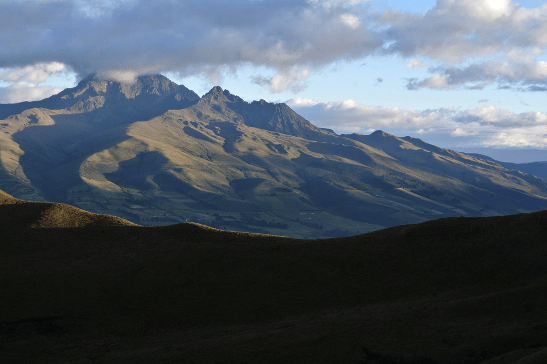
Andes Amazon Fund celebrates the establishment of Ecuador’s newest Municipal Protected Area System in the volcano-rich northern province of Pichincha. The protected lands encompass 183,552 acres (74,281 ha) ranging from cloud forest on the western slopes of the Andes to paramos (high-altitude grasslands) in the eastern Andes. The system is split into two blocks: Tigrillo-Yumbo in the western Andes, and Condor-Kuri to the east. Both safeguard water sources for the municipality of Mejía, as well as the Ecuadorian capital of Quito. The system also connects biological corridors for some of Ecuador’s most iconic and imperiled species, including the Andean Condor and the Capuchin Monkey. It also contributes to a proposed conservation corridor, known as Puma Paccha, which intends to bring back “umbrella species” like the puma to support overall ecosystem health.

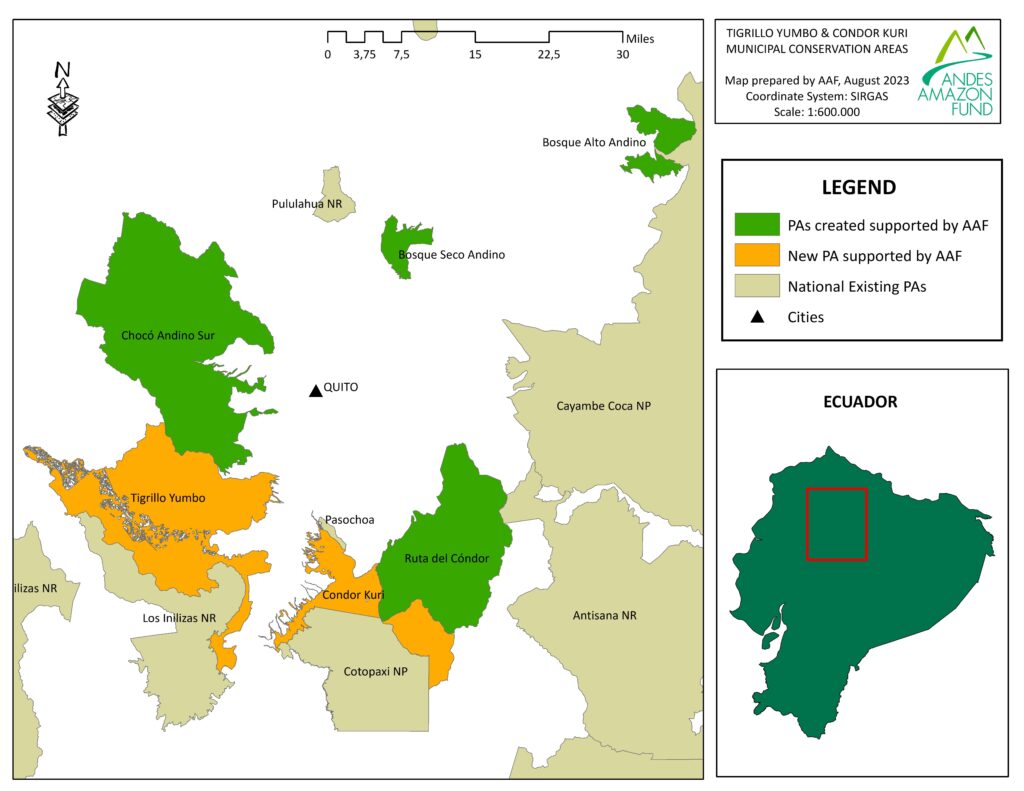
Condor-Kuri
Spanning 48,025 acres (19,435 ha) of eastern Andean paramos and the upper Pita River watershed, the Condor-Kuri Municipal Protected Area is a milestone for local communities and key ecosystem corridors. Paramos act as a sponge that stores and purifies water at high altitudes, feeding into rivers that make up the upper Amazon headwaters. The establishment of the Condor-Kuri Municipal Conservation Area means 100% of the watershed contributing to water capture for over a million people is now protected, benefitting the Mejía municipality and the Ecuadorian capital city of Quito.

The project also supports collaboration between Mejía and Quito’s water fund, FONAG (Fund for the Protection of Water), and Mejía’s public water utility. Both organizations recently signed an agreement to coordinate on environmental conservation and restoration in areas of common interest.

In addition to water protection, the Condor-Kuri Municipal Conservation Area lives up to its name, safeguarding key nesting sites and migration routes for the iconic Andean Condor (Vultur gryphus). The conservation of this area significantly contributes to connectivity with other protected areas, including Antisana, Cayambe Coca, Cotopaxi, and Llanganates National Parks, the Colonso-Chalupas Biological Reserve, the Ruta del Condor Provincial Conservation Area, and the Pasochoa Wildlife Refuge. Ecosystem connectivity supports the life cycles and migration routes of native flora and fauna like deer and Andean bears. Scientists hope that by restoring these natural food chains, the puma (Puma concolor), an indicator of ecosystem health, will return.
Tigrillo-Yumbo
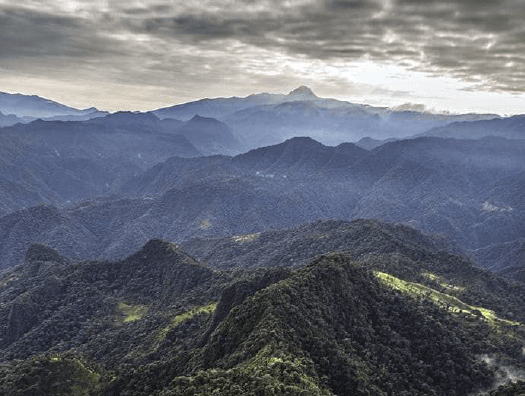
The Tigrillo-Yumbo Municipal Conservation Area covers 135,527 acres (54,846 ha) of western Andean slopes, safeguarding lush cloud forests, páramos and rivers. The area includes sections of two volcanoes: Atacazo and Corazón, which store and produce water for Quito and Mejía.
Tigrillo-Yumbo also establishes a conservation corridor with the Andean Chocó Biosphere Reserve, the Chocó Andino Sur Provincial Conservation Area, and the Illinizas Ecological Reserve. Its diverse ecosystems are home to several endangered species, including the mantled howler monkey (Alouatta palliata), the black-and-chestnut eagle (Spizaetus isidori), and the puma (Puma concolor).
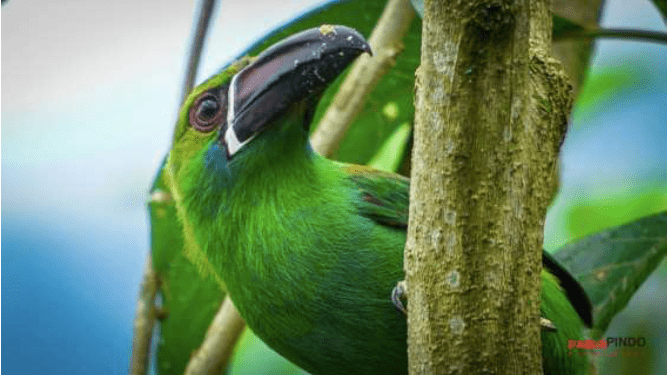
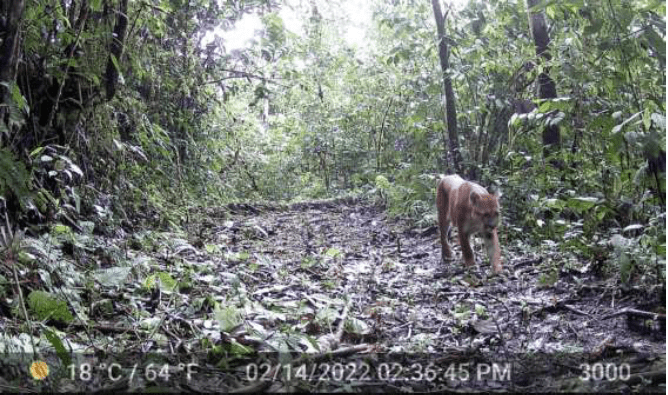
Management plans are in motion for both protected areas, with FONAG working alongside local communities to promote long-term conservation.
FONAG recognizes the conservation commitments of communities through the improvement of access to safe water. Additionally, it is training community brigades in preventing and combating fires in the paramos.
Bert de Bièvre, techincal secretary of FONAG
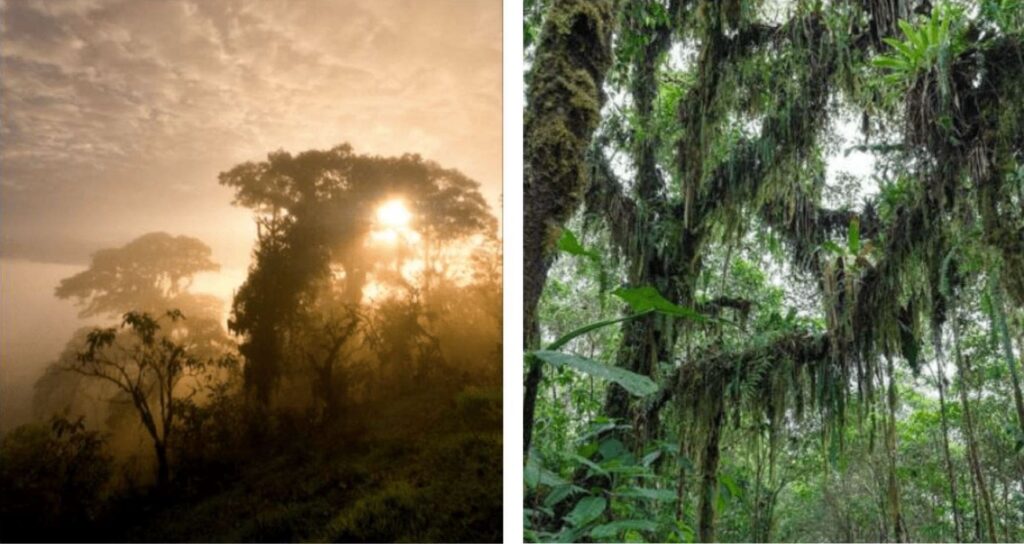
Acknowledgments
This conservation victory was made possible thanks to the collaborative efforts of the Autonomous Decentralized Government of Mejía and Andes Amazon Fund partners Fund for the Protection of Water (FONAG). Additional support was provided by the Ecuadorian Ministry of Environment (MAATE).
MAKE AN IMPACT
Learn how we can make an impact in our world together. Donate or get involved by subscribing to our email list:
